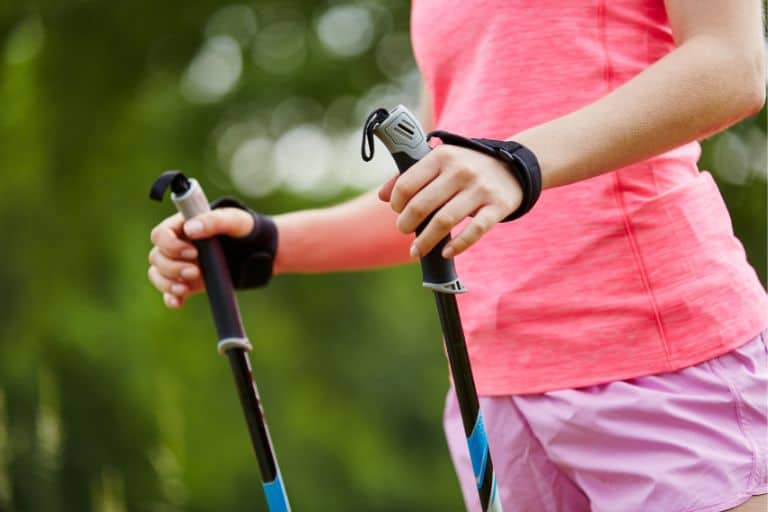Can You Use a Walking Stick for Self Defense?
As an enthusiast and advisor in the realm of self defense, I am often asked about the effectiveness of using a walking stick as a means of personal protection. Walking sticks have a long history, dating back centuries, and have been utilized for various purposes, including as weapons. In this article, we will explore the potential role of a walking stick in self defense, the benefits it offers, how to choose the right walking stick, proper techniques for self defense, legal considerations, the importance of training, and other self defense options to consider. So, let’s dive in and find out if a walking stick can indeed be a reliable tool for self defense.
The Role of Walking Sticks in Self Defense
History of Walking Sticks as Weapons
Walking sticks have been used as weapons since ancient times. They were often crafted with durable materials such as wood or metal and carried by travelers, explorers, and even royalty as a means of protection. These sticks provided individuals with an extended reach and a sturdy tool for striking or defending against potential threats.
Modern Walking Sticks for Self Defense
In modern times, walking sticks designed specifically for self defense purposes have gained popularity. These sticks are often made from materials like carbon fiber or aluminum, which offer strength and durability while remaining lightweight. They are ergonomically designed with comfortable grips and sometimes feature additional features like built-in flashlights or concealed blades for added versatility.
Benefits of Using a Walking Stick for Self Defense
Increased Reach and Range
One of the key advantages of using a walking stick for self defense is the increased reach it provides. With a walking stick in hand, you can maintain distance from an attacker, reducing the chances of being grabbed or struck. The extended range allows you to create a buffer zone, giving you more time to react and assess the situation.
Enhanced Striking Power
A walking stick can significantly amplify your striking power. By leveraging the stick’s length and weight, you can deliver more impactful blows to deter or disable an assailant. The solid construction of modern self defense sticks ensures that the force you generate is effectively transferred to your target, increasing your chances of incapacitating an attacker.
Improves Stability and Balance
Not only does a walking stick offer offensive capabilities, but it also enhances stability and balance. When confronted with a potentially dangerous situation, maintaining your footing and equilibrium is crucial. A walking stick provides an additional point of contact with the ground, giving you stability and confidence as you maneuver and defend yourself.
Choosing the Right Walking Stick for Self Defense
Selecting the appropriate walking stick for self defense is essential to ensure its effectiveness and suitability for your needs. Consider the following factors when choosing a self defense walking stick:
Material and Durability
Opt for a walking stick made from strong and durable materials such as carbon fiber or aluminum. These materials offer the necessary strength to withstand strikes and are less likely to break or splinter under pressure.
Grip and Handle Design
Choose a walking stick with an ergonomic grip and handle design. Look for handles that provide a comfortable and secure hold, allowing you to maintain control during a self defense situation. Non-slip materials or textured grips can further enhance your grip.
Adjustability and Portability
Consider the adjustability and portability of the walking stick. Some sticks feature telescopic designs, allowing you to adjust the length to your preference or easily pack them for travel. This flexibility ensures that the stick can adapt to different situations and be conveniently carried when needed.
Proper Techniques for Self Defense with a Walking Stick
To effectively utilize a walking stick for self defense, it’s important to learn and practice proper techniques. Here are some fundamental techniques to master:
Stance and Grip
Maintain a balanced and stable stance with your feet shoulder-width apart. Grip the walking stick firmly, positioning your dominant hand closer to the stick’s top, while the other hand holds the lower part for support. This grip offers control and maneuverability.
Striking Techniques
Practice various striking techniques, such as thrusts, strikes, and sweeps. Thrusts involve extending the stick forward, targeting vulnerable areas like the groin or abdomen. Strikes involve swinging the stick horizontally or vertically to strike an attacker. Sweeps are low strikes aimed at an assailant’s legs, destabilizing them.
Blocking and Parrying
Learn blocking and parrying techniques to defend against incoming attacks. Blocking involves using the walking stick to intercept and redirect strikes. Parrying is the act of deflecting an opponent’s weapon or limb using the stick, creating openings for counterattacks.
Legal Considerations and Self Defense Laws
Before relying on a walking stick for self defense, familiarize yourself with local regulations and self defense laws. Laws pertaining to the use of force and the carrying of self defense tools vary by jurisdiction. Understand the circumstances under which self defense is considered justifiable and the limitations imposed by the law.
Training and Practice for Effective Self Defense
To maximize the effectiveness of using a walking stick for self defense, it’s crucial to undergo proper training and practice regularly. Seek qualified instructors who can teach you the necessary techniques, provide guidance, and help you develop the skills needed to handle real-life scenarios. Regular practice drills will help you become more proficient and confident in your abilities.
Other Self Defense Options to Consider
While a walking stick can be a valuable tool for self defense, it’s essential to consider other options that may suit your circumstances and preferences. Here are a few alternatives to explore:

Pepper Spray
Pepper spray is a non-lethal self defense tool that can temporarily incapacitate an attacker. It is compact, easy to carry, and can be effective in situations where physical confrontation can be avoided.

Personal Alarms
Personal alarms emit a loud, attention-grabbing sound when activated, which can startle and deter potential attackers. These small devices are easy to carry and can attract help from nearby individuals.

Martial Arts Training
Engaging in martial arts training can equip you with comprehensive self defense skills. Learning martial arts not only provides physical techniques but also enhances mental focus, situational awareness, and self-confidence.
Conclusion
In conclusion, a walking stick can be a viable option for self defense due to its extended reach, enhanced striking power, and improved stability. When selectinga walking stick for self defense, consider factors such as material, grip design, and adjustability. Proper techniques, including stance, striking, and blocking, are essential to effectively use a walking stick for self defense. It’s important to be aware of the legal considerations and self defense laws in your jurisdiction. Training under qualified instructors and regularly practicing the techniques are crucial for developing proficiency. Additionally, exploring other self defense options like pepper spray, personal alarms, and martial arts training can provide a well-rounded approach to personal protection.
FAQs
1. Is it legal to carry a walking stick for self defense? Laws regarding the carrying of self defense tools, including walking sticks, vary by jurisdiction. It’s important to research and understand the specific regulations in your area to ensure compliance with the law.
2. Can anyone use a walking stick for self defense? Yes, anyone can learn to use a walking stick for self defense with proper training and practice. It’s important to develop the necessary skills and techniques to use the stick effectively and responsibly.
3. Are there specific self defense techniques for using a walking stick? Yes, there are various self defense techniques tailored for using a walking stick. These techniques include proper grip, striking, blocking, and parrying. Training under qualified instructors can help you learn and master these techniques.
4. Can a walking stick be used as a deterrent without physical contact? Yes, the mere presence of a walking stick can act as a deterrent and discourage potential attackers. The extended reach and perceived defensive capabilities of a walking stick can make an assailant think twice before initiating an attack.
5. Are there any disadvantages to using a walking stick for self defense? While a walking stick can be an effective tool for self defense, it’s important to be aware of its limitations. The effectiveness of the stick depends on the user’s skill and physical abilities. Additionally, in some situations, other self defense options may be more suitable or legally compliant.


